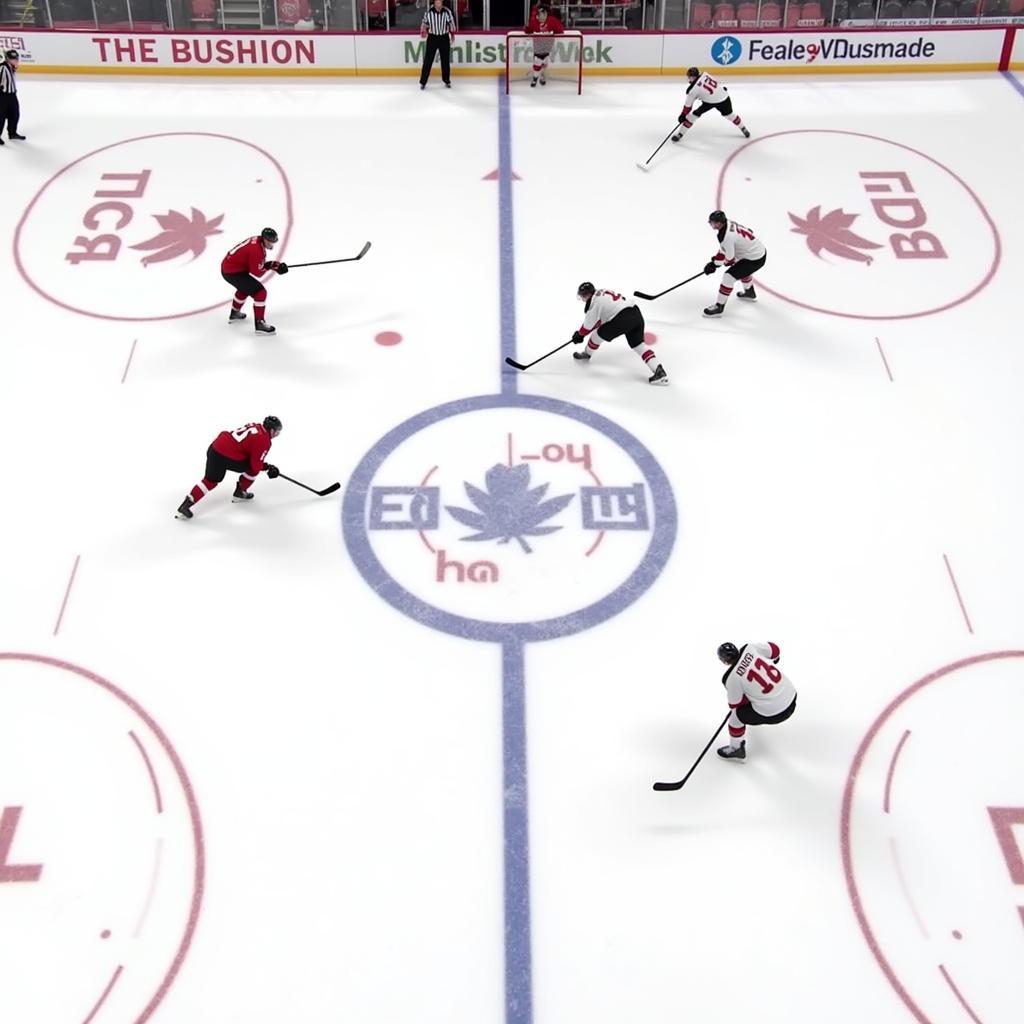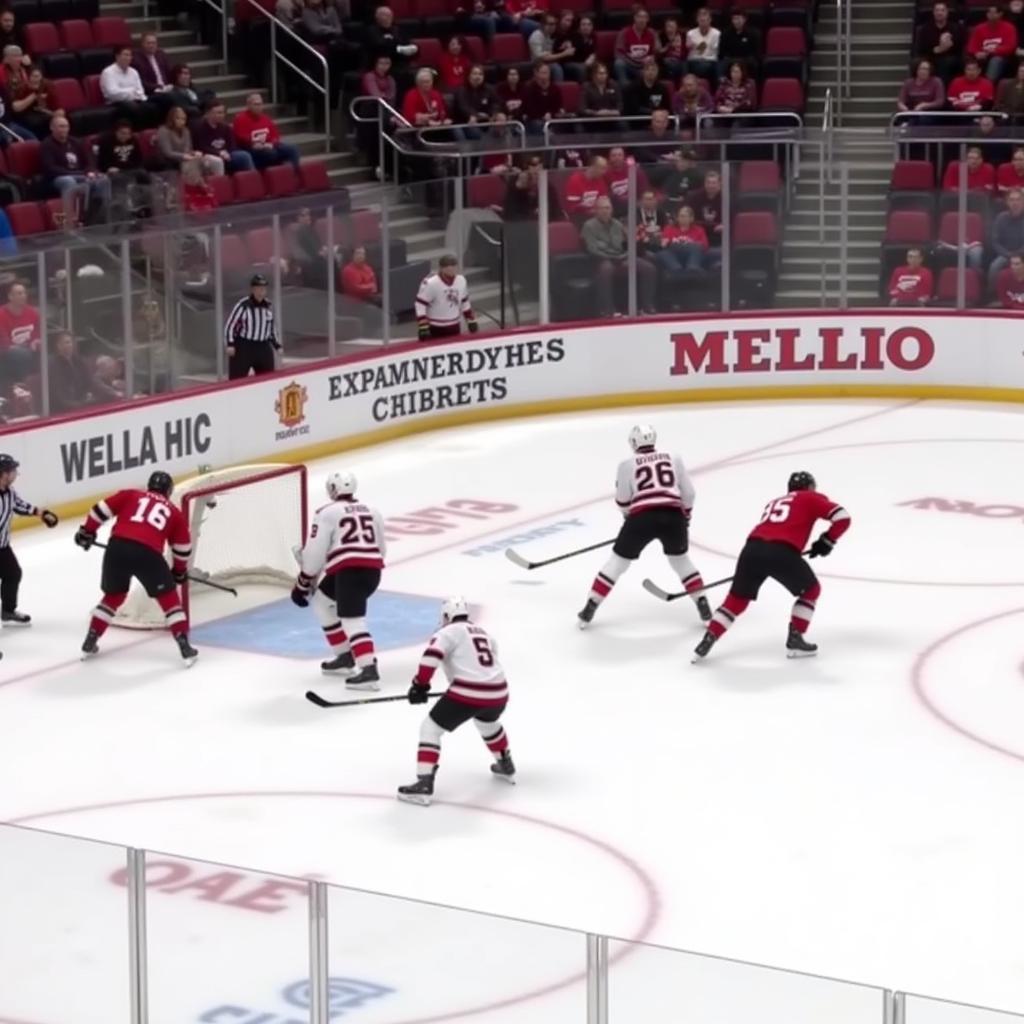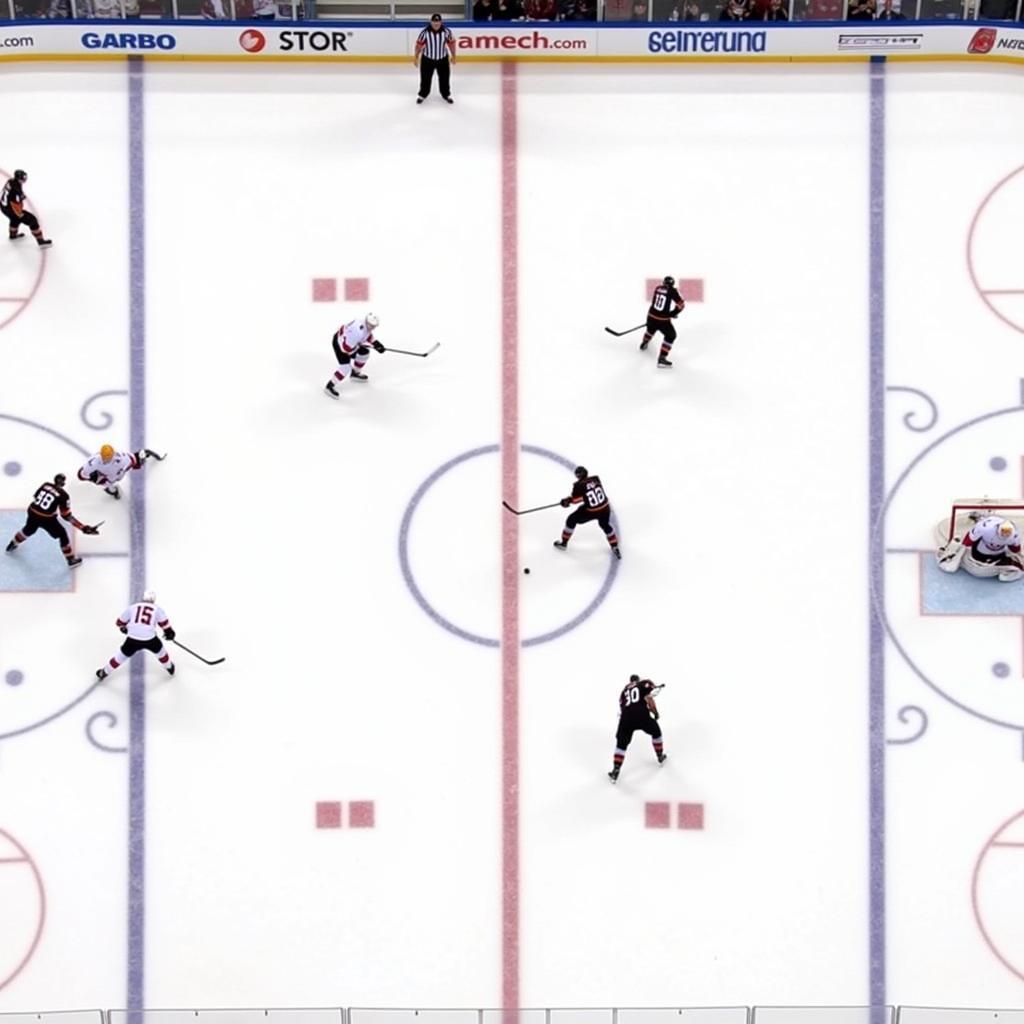The 2-3 Forecheck is a popular and effective defensive strategy in hockey, used to disrupt the opposing team’s breakout and generate turnovers in the offensive zone. This aggressive system involves two forwards pressuring the puck carrier and three players forming a high line to limit passing options.
 Hockey players executing a 2-3 forecheck
Hockey players executing a 2-3 forecheck
Understanding the 2-3 Forecheck
This strategy is named after the positioning of the players: 2 forwards pressuring high in the offensive zone and 3 players (2 defensemen and 1 forward) forming a line across the blue line. The goal is to trap the puck in the offensive zone, force turnovers, and create scoring opportunities.
Benefits of the 2-3 Forecheck
- Disrupts Breakout Plays: The aggressive forechecking pressure disrupts the opponent’s attempts to transition the puck out of their defensive zone.
- Creates Turnovers: The limited passing options and pressure often lead to mistakes and turnovers, providing scoring chances for the forechecking team.
- Controls Momentum: Successfully executing a 2-3 forecheck can shift the game’s momentum, putting the opposing team on their heels.
 Hockey players creating a turnover using the 2-3 forecheck
Hockey players creating a turnover using the 2-3 forecheck
Key Roles and Responsibilities
- F1 (Forechecker 1): The first forward attacks the puck carrier with speed, aiming to force a decision or create a turnover.
- F2 (Forechecker 2): The second forward provides support, taking away passing options and angling the puck carrier toward the boards.
- D1 and D2 (Defensemen): Positioned at the blue line, they prevent long passes and keep the play in the offensive zone.
- F3 (Center): The center acts as the high forward, covering the middle of the ice and anticipating passes through the slot.
Executing the 2-3 Forecheck Effectively
- Communication: Players need to communicate constantly, providing updates on puck location, passing lanes, and opponent movement.
- Timing and Coordination: The timing of the forecheck is crucial. All five players must be in sync to close gaps quickly and prevent easy breakout passes.
- Puck Pressure: Aggressive and relentless puck pressure is essential to force errors and create turnovers.
Adapting to Different Situations
- Dump-ins: When the puck is dumped into the offensive zone, F1 and F2 adjust their positioning to win puck battles along the boards.
- Regrouping: If the forecheck is unsuccessful, players must transition back into a defensive structure quickly to prevent odd-man rushes.
 Hockey players adapting the 2-3 forecheck to a dump-in play
Hockey players adapting the 2-3 forecheck to a dump-in play
Conclusion
The 2-3 forecheck is a powerful weapon in a hockey team’s arsenal. By mastering the key principles of communication, timing, and puck pressure, teams can effectively disrupt opponents, generate turnovers, and create scoring opportunities in the offensive zone.
FAQs
- What are the disadvantages of the 2-3 forecheck? While effective, it can leave the defensive zone vulnerable to long passes and breakaways if not executed correctly.
- Is the 2-3 forecheck suitable for all hockey teams? Its effectiveness depends on the team’s strengths, the opponent’s playing style, and the game situation.
Need help? Contact us!
Phone Number: 0902476650
Email: [email protected]
Address: 139 Đ. Võ Văn Kiệt, Hoà Long, Bà Rịa, Bà Rịa – Vũng Tàu, Việt Nam.
We have a dedicated customer support team available 24/7.





